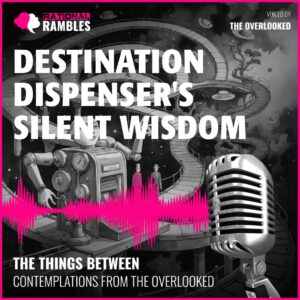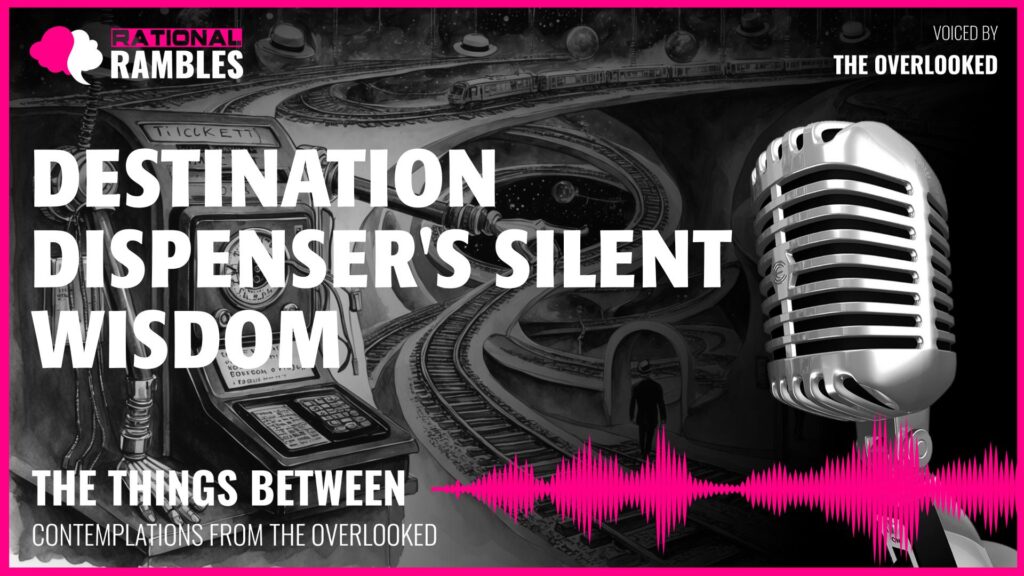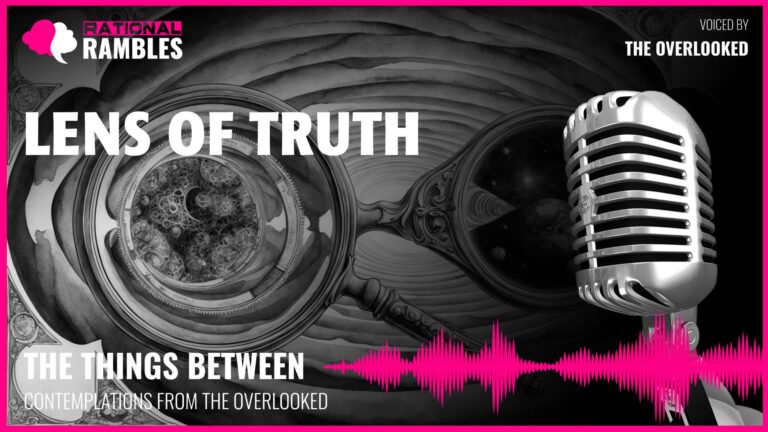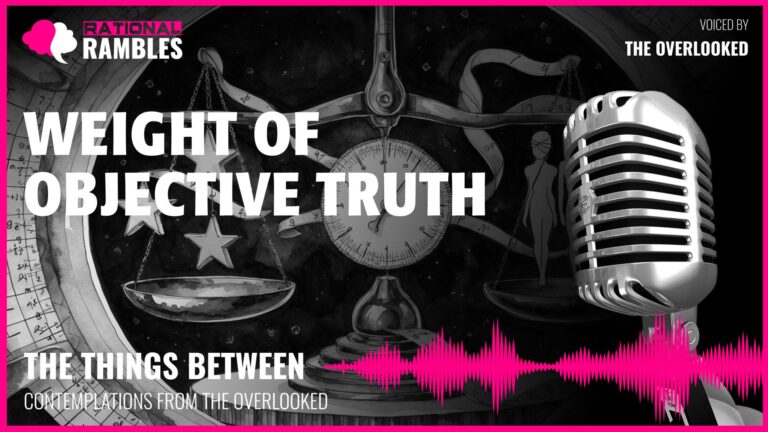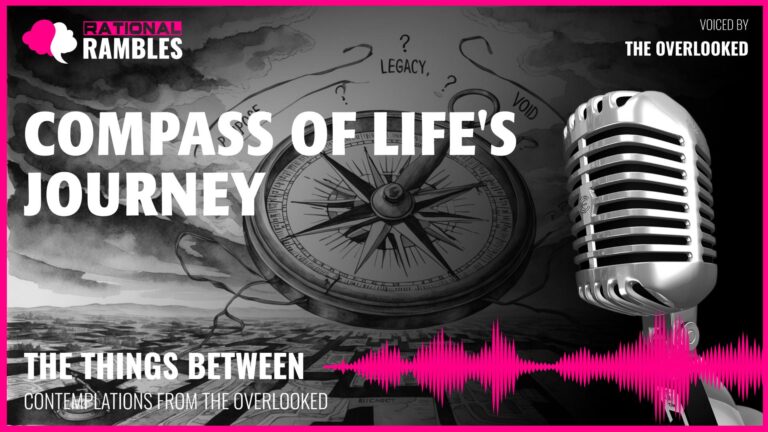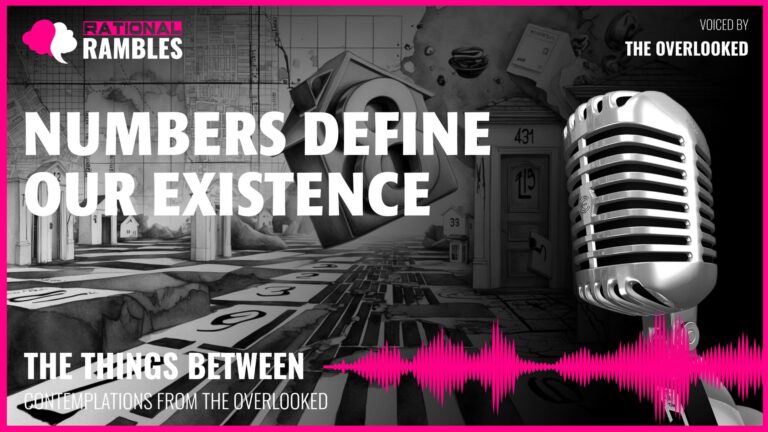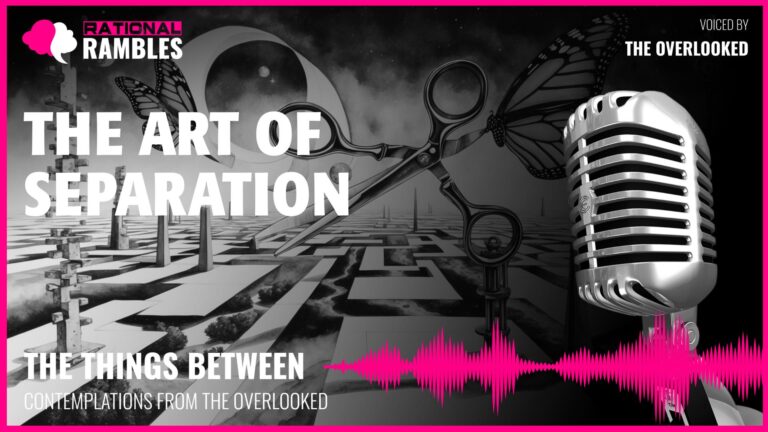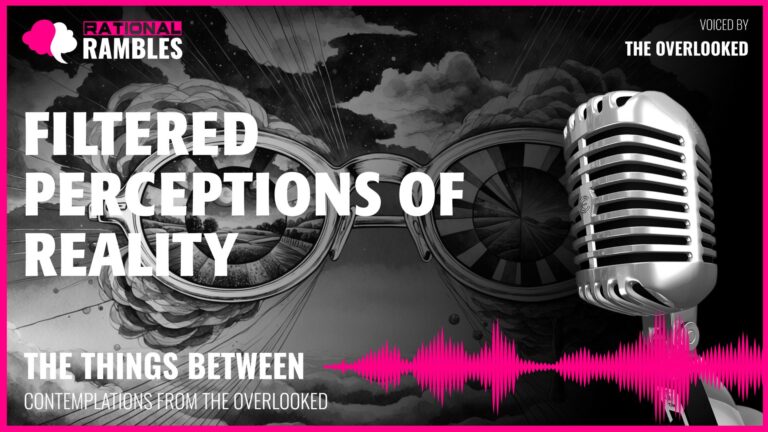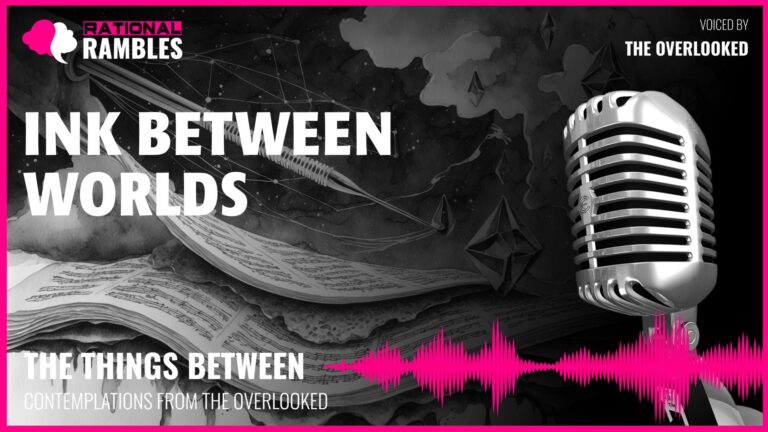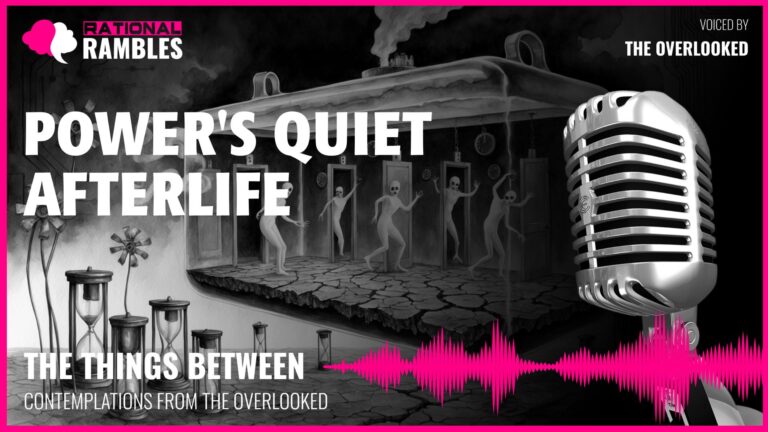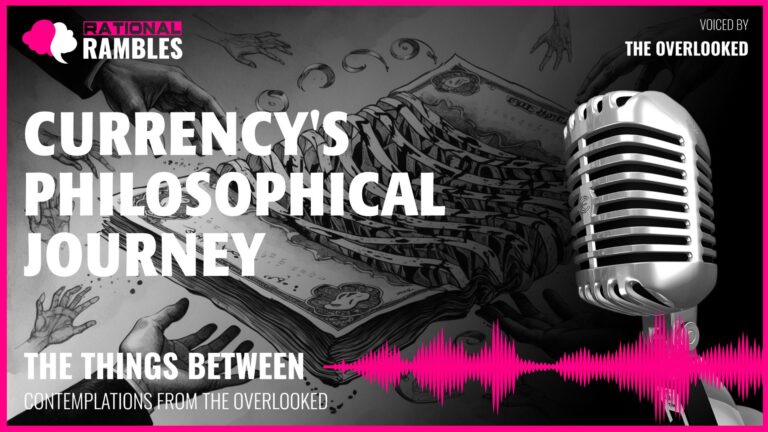The Architecture of Choice: Freedom, Constraint, and the Journey of Human Becoming
Introduction
In the quiet moments between decisions, we rarely contemplate the profound metaphysics of choice that shapes our existence. Each day, we navigate through a complex matrix of possibilities—some apparent, others hidden—that collectively form the tapestry of human experience. The simple act of selecting a destination, whether physical or metaphorical, represents one of the most fundamental expressions of human agency. Yet this seemingly straightforward process conceals deeper philosophical questions about the nature of freedom, the structure of choice, and what it means to move purposefully through space and time.
What does it mean to choose? Are our selections truly free, or are they predetermined by invisible tracks laid down long before we arrive at the moment of decision? How do the technological interfaces through which we navigate modern life shape our perception of choice and freedom? These questions transcend the mundane interactions of daily life and touch upon the essential condition of human existence.
This article explores the philosophy of choice and destination—examining how our movements through physical space mirror our navigation through conceptual possibilities. By analyzing the architecture of decision-making, the boundaries of freedom within constraint, and the relationship between journey and destination, we can better understand not just where we are going, but who we are becoming through the paths we select.
The Illusion and Reality of Choice
When we stand before a set of options—whether displayed on a screen, presented in a conversation, or contemplated in solitude—we experience what feels like freedom. The power to select among alternatives seems fundamental to our understanding of human agency. Yet philosophers have long questioned whether this sense of choice represents genuine freedom or merely the illusion of it.
Predetermined Paths and the Question of Free Will
The philosophical debate about free will spans centuries, from ancient theological questions to modern neuroscientific investigations. Determinism—the view that every event, including human decisions, is caused by previous events following the laws of nature—challenges our intuitive sense of freedom. If our choices are merely the inevitable outcome of prior causes, can we truly claim to have chosen freely?
As Arthur Schopenhauer famously observed, “Man can do what he wills, but he cannot will what he wills.” Our preferences, dispositions, and even our apparent moment-of-decision hesitations may themselves be determined by factors beyond our control—genetic inheritance, early childhood experiences, social conditioning, or even the subtle influence of recent events we barely noticed.
Consider how many of our daily movements follow predictable patterns: the commuter who takes the same train every morning, the coffee order that rarely changes, the habitual routes we walk through familiar neighborhoods. These patterns suggest that much of what we consider choice may be routine operating beneath the threshold of conscious deliberation. The Tuesday regular who briefly contemplates a different destination before selecting the familiar route reveals how powerfully our past decisions shape our future ones.
The Architecture of Constraint
Even if we set aside the metaphysical question of determinism, our choices are never made in conditions of unlimited freedom. Every decision occurs within an architecture of constraint—physical, social, economic, and cognitive boundaries that limit the field of possibility.
The modern transportation system offers a perfect metaphor for this reality. When purchasing a ticket, we can only select destinations that exist on established routes. We cannot simply invent new stations or demand trains to locations beyond the network. Our freedom consists not in unlimited possibility but in selection among predetermined options.
This observation extends beyond literal journeys. Career choices are constrained by education, opportunity, and market demands. Relationship possibilities are limited by geography, social circles, and mutual compatibility. Even our most personal life decisions occur within frameworks we did not create and cannot fundamentally alter.
As political philosopher Isaiah Berlin distinguished in his concept of positive and negative liberty, freedom is not merely the absence of external obstacles (negative liberty) but also the presence of conditions that enable meaningful self-direction (positive liberty). The architecture of our choices—what options appear, how they are presented, and what resources we have to evaluate them—profoundly shapes our experience of freedom.
The Paradox of Limited Options
Counterintuitively, completely unlimited choice can actually diminish our sense of agency rather than enhance it. Psychologists like Barry Schwartz have documented what they call “the paradox of choice”—when faced with too many options, we often experience anxiety, decision paralysis, and subsequent regret about the paths not taken.
The constraints within which we make decisions may therefore serve not just as limitations but as enabling structures. Just as a sonnet’s strict formal requirements can inspire creativity rather than stifle it, the boundaries of our possible choices may focus our deliberative energies and give meaning to the selections we do make.
This suggests a more nuanced understanding of freedom than simple absence of constraint. True freedom might better be understood as meaningful agency within acknowledged limitations—the ability to navigate thoughtfully among realistic possibilities rather than to transcend all boundaries.
The Metaphysics of Destinations
What is a destination? On the surface, it appears to be simply a physical location—a coordinate on a map, a station on a rail line, an address in a city. Yet upon deeper reflection, destinations reveal themselves to be far more complex and conceptually rich than mere geographical endpoints.
Destinations as Nested Realities
When someone says, “I’m going to Paris,” the apparent simplicity of this statement conceals multiple layers of intention and meaning. Paris is not a singular destination but a collection of potential experiences, encounters, and smaller destinations nested within the larger geographical boundary.
The true destination might be a specific café on the Left Bank, a meeting with a colleague at the Sorbonne, or an anticipated moment standing before a particular painting in the Louvre. These nested destinations reveal how our journeys are structured by intention and purpose rather than mere spatial movement.
This perspective aligns with phenomenological approaches to space, particularly those of Martin Heidegger who distinguished between objective, measurable space and the lived, meaningful places we inhabit. A destination in this deeper sense is not merely a point in Cartesian space but a node in a web of significance—defined less by its coordinates than by its relationship to human projects, memories, and anticipations.
The Teleology of Movement
Aristotle’s concept of final causation—that things can be understood by their telos or purpose—offers insight into how destinations function in human experience. Our movements through space are rarely random but are instead guided by ends we seek to realize.
These ends exist in a temporal dimension that transcends the immediate present. When purchasing a ticket, selecting a route, or embarking on a journey, we project ourselves into a future state. The destination exists first as anticipation, as imagined possibility, before it becomes present reality.
This teleological structure of human movement distinguishes it from mere physical displacement. As phenomenologist Maurice Merleau-Ponty observed, the body is not simply an object in space but the very medium through which we have a world at all. Our embodied movement toward destinations is therefore laden with meaning, intention, and purpose that transcends mechanical locomotion.
Beyond Geography: Metaphorical Destinations
The concept of destination extends beyond literal journeys to metaphorical ones. We speak of career destinations, relationship destinations, and life destinations. We ask young people about their hopes and dreams with the question, “Where do you want to go in life?”—employing spatial metaphors for temporal and developmental processes.
This linguistic pattern reflects a deeper conceptual mapping through which we understand progress, development, and purpose in spatial terms. As cognitive linguists George Lakoff and Mark Johnson have documented, the metaphorical concept of “life as journey” structures how we think about our existence, our choices, and our purposes.
The purchase of a one-way ticket rather than a return journey becomes, in this light, a powerful representation of life transitions—moments when we commit to new beginnings without predetermined endpoints or guaranteed returns to familiar territory. Such decisions represent not merely travel arrangements but existential commitments to becoming different versions of ourselves.
The Ontology of Decision Interfaces
In contemporary life, our choices are increasingly mediated through technological interfaces—screens, buttons, digital displays that present options and register selections. These interfaces are not neutral channels but active participants in shaping how we perceive and enact choice.
Technology as Mediator of Possibility
The design of choice interfaces—whether physical buttons on a ticket machine, dropdown menus on a website, or algorithmic recommendations on a streaming service—constitutes what philosopher Don Ihde would call a “technological intentionality.” These systems direct our attention toward certain possibilities while obscuring others.
Consider how differently we might experience choice when consulting a paper map versus following turn-by-turn GPS directions, or how differently we might select a destination from a complete national rail timetable versus a simplified touch-screen interface showing only major stations. The medium through which choices are presented shapes not just how we choose but what we perceive as choosable.
This technological mediation of choice raises important questions about agency and autonomy. When interfaces are designed to “nudge” us toward certain selections through default settings, visual prominence, or ease of selection, the boundary between facilitation and manipulation becomes increasingly blurred.
The Human-Machine Relationship in Choice
Our interactions with decision-making technologies reveal complex dynamics of agency distribution. When a tourist struggles with an unfamiliar ticket interface, the technology shifts from transparent tool to opaque obstacle. The relationship transforms from extension of human intention to confrontation with alien logic.
Martin Heidegger’s distinction between tools that are “ready-to-hand” (zuhanden) versus “present-at-hand” (vorhanden) illuminates this dynamic. When technology functions smoothly as anticipated, it recedes from our awareness, becoming an almost invisible extension of our agency. When it malfunctions or resists our intentions, it suddenly appears as an object with its own stubborn materiality and logic.
These moments of technological breakdown or resistance can be philosophically revealing—making visible the normally transparent structures that mediate our choices and movements through the world. They remind us that our agency is always technologically extended and environmentally situated rather than purely self-contained.
The Ethics of Interface Design
If choice interfaces shape our perception of possibilities, their design becomes an ethical matter rather than merely a technical one. The values embedded in these systems—efficiency, simplicity, comprehensiveness, accessibility—reflect judgments about what aspects of choice matter most.
Consider how different ticket machine designs might prioritize competing values: one emphasizing comprehensive information at the cost of simplicity, another privileging quick transactions at the expense of exploring alternatives, a third designed for maximum accessibility to diverse users rather than efficiency for the majority.
These design decisions distribute agency differently across the human-machine relationship. They make some choices easier and others harder, make some possibilities visible and others invisible. As our lives become increasingly mediated through such interfaces, the philosophical question of how these systems should be designed—what values they should embody and what conception of human choice they should support—becomes increasingly urgent.
Time, Change, and the Paradox of Journey
Journey and destination exist in dialectical relationship, each giving meaning to the other through temporal unfolding. This relationship reveals profound tensions between permanence and change, between becoming and being, that lie at the heart of human experience.
The Heraclitean Traveler
Heraclitus famously observed that one cannot step into the same river twice, for both the river and the person are constantly changing. This insight has special relevance for understanding journeys. The person who returns from a journey is never quite the same as the one who departed.
Each physical journey involves not just spatial movement but temporal transformation. The tired face of an evening arrival contrasts with the anticipatory expression of morning departure. The journey itself—its encounters, delays, observations, and reflections—changes the traveler in ways both subtle and profound.
This Heraclitean perspective challenges the simple model of journey as mere displacement from point A to point B. If both traveler and destination are in constant flux, the journey becomes not a connection between fixed points but a temporary relationship between changing entities.
Journey as Becoming
Process philosophers from Henri Bergson to Alfred North Whitehead have emphasized becoming over being, process over substance. Their perspective illuminates how journeys function as processes of becoming rather than mere means to relocate static identities.
Consider the couple who purposely takes a later train, valuing the time spent traveling together over efficient arrival. Their choice reveals an understanding of journey as valuable experience rather than mere transition between more important states. The journey itself becomes a privileged space of becoming—a liminal zone where identities and relationships can develop differently than in the fixed contexts of daily life.
This understanding of journey as becoming rather than mere transit aligns with anthropological observations about pilgrimage, migration, and other significant human movements. These journeys are not simply about reaching destinations but about becoming different through the process of movement itself.
The Temporal Paradox of Choice
Our decisions about movement contain a temporal paradox: we select destinations based on who we currently are, but the journey toward those destinations changes who we are. The self who arrives may want something different than what the departing self sought.
This paradox appears in life decisions large and small. The student selects a career path based on current interests and values, only to find those very interests and values transformed by the educational journey. The traveler books a vacation based on a desire for relaxation, only to discover through the journey a newfound appetite for adventure.
The traditional understanding of rational choice assumes a stability of preference that this temporal paradox challenges. If our preferences and values are themselves transformed by our journeys, how can we make choices that truly serve our interests? This question points toward existential approaches that emphasize becoming over fixed identity and process over predetermined ends.
Identity and Permanence in a World of Flux
If both travelers and destinations are constantly changing, what remains constant? How do we maintain coherent identities and meaningful narratives amid continuous transformation? These questions point toward philosophical problems of personal identity and the relationship between change and continuity.
The Ship of Theseus Problem
The ancient thought experiment of the Ship of Theseus asks whether a ship that has had all its components gradually replaced remains the same ship. This paradox has direct relevance to questions of personal identity through time and change.
Like a ship undergoing repairs, we change continuously—physically, psychologically, socially. Our cells regenerate, our memories fade and transform, our relationships evolve. Yet we maintain a sense of being the same person through these changes. How is this possible?
Various philosophical traditions offer different answers. John Locke located personal identity in psychological continuity—the chain of memories connecting our past and present selves. Narrative theories suggest we maintain identity by constructing coherent stories about ourselves that integrate change into meaningful patterns. Buddhist traditions question whether the sense of continuous self is anything more than a useful fiction covering the reality of constant flux.
Destinations as Anchors in Becoming
Within this context of perpetual change, chosen destinations—both literal and metaphorical—can function as anchors that provide continuity and direction. By selecting where we are going, we establish reference points that help define who we are becoming.
Consider how life goals provide narrative coherence to otherwise disparate experiences. The medical student endures challenging courses, sleepless nights, and personal sacrifices, integrating these experiences into a coherent identity through reference to the destination of becoming a physician. The destination provides not just an endpoint but a principle of organization for understanding the journey.
This anchoring function of destinations helps explain why changes in destination can provoke identity crises. When long-pursued goals become suddenly unattainable or no longer desirable, the narrative coherence they provided is disrupted. The journey continues, but its meaning becomes temporarily obscured.
The Dialectic of Routine and Disruption
Our movements through life typically balance routine journeys with occasional departures from established patterns. This dialectic between the familiar and the novel serves important functions in identity maintenance and development.
Routine journeys—the daily commute, regular visits to family, annual vacations to favorite places—reinforce continuity of identity. They connect our present to our past through repetition and familiarity. The businessman who purchases the same ticket every day participates in a ritual of identity confirmation as much as a physical relocation.
Disruptive journeys—moves to new cities, career changes, unexpected detours—create opportunities for identity development through encounter with the unfamiliar. The one-way ticket to a new beginning represents a deliberate engagement with transformative potential.
Healthy human development seems to require both continuity and novelty, both the security of familiar journeys and the growth potential of new destinations. This balance allows us to maintain coherent identities while still evolving through engagement with new possibilities.
The Ethics of Movement and Destination
Our choices about movement and destination have ethical dimensions that extend beyond personal preference. They implicate our relationships with others, with the environment, and with larger questions of how life should be lived.
Freedom as Ethical Responsibility
Existentialist philosophers like Jean-Paul Sartre emphasized that freedom entails responsibility. If we are indeed free to choose our destinations—within the constraints that define human existence—then we bear responsibility for those choices and their implications.
This perspective shifts the question from “What can I choose?” to “What should I choose?” Our selections among destinations become expressions of values and commitments rather than mere preferences. The tourist choosing between destinations is implicitly making ethical judgments about what experiences are worth having, what places deserve attention, and how limited time should be allocated.
Moreover, in a world of limited resources and environmental constraints, our movement choices have consequences beyond our individual experiences. The carbon footprint of different transportation modes, the impact of tourism on local communities, and the sustainability of our mobility patterns all raise ethical questions about responsible movement.
The Relational Dimension of Journeys
Our journeys and destinations exist within webs of relationship that give them additional ethical significance. We rarely travel completely alone—our movements affect others, depend on others, and derive meaning from others.
Consider the tearful goodbye between lovers at a train station. The departure is meaningful precisely because of the relationship it temporarily interrupts. The journey takes on ethical significance through its impact on the connection between people who care for each other.
Similarly, our ability to move freely depends on the labor of countless others—those who build and maintain transportation infrastructure, who operate vehicles, who create the technological systems that facilitate our journeys. This dependency entails ethical obligations of gratitude, respect, and fair compensation that we too often overlook in our focus on individual mobility.
Destinations as Values Embodied
The destinations we select—both literal and metaphorical—embody our values and priorities. The choices we make about where to go reflect and reinforce what we consider important, meaningful, and worthy of pursuit.
The family debating between a city break and a day at the lake is not merely choosing between geographical locations but between different types of experiences and different expressions of what they value as a family. Their ultimate choice reveals and reinforces collective priorities.
This understanding of destinations as values embodied allows us to approach choice more reflectively. Rather than selecting destinations based on habit or external expectation, we can ask what values our choices express and whether these align with our deeper commitments and aspirations.
The Phenomenology of Decision Moments
The actual moments of decision—when fingers hover over options, when minds contemplate alternatives, when selections are finally confirmed—offer rich terrain for philosophical exploration. These moments reveal the lived experience of choice in all its complexity.
The Temporal Structure of Decision
Decision moments have a complex temporal structure that phenomenologists like Edmund Husserl have explored through concepts of retention, attention, and protention. The present moment of choice contains within it both the retained past (memories, habits, accumulated knowledge) and anticipated futures (projected outcomes, imagined arrivals).
When someone hesitates before selecting a destination, their present experience encompasses both backward-looking and forward-looking dimensions. They recall previous journeys, consider current circumstances, and project themselves into various possible futures. This temporal complexity exists within what might appear to observers as a simple moment of hesitation.
Understanding this temporal structure helps explain why decisions that appear identical from outside might feel entirely different to the decider. The commuter selecting a routine destination and the refugee selecting an emergency evacuation route might press the same button, but their experiences of that selection differ enormously because of the different temporal horizons encompassed in their decisions.
Embodied Cognition in Choice
Decision-making is not a disembodied rational process but an embodied experience involving sensation, emotion, and physical action. The finger hovering over options, the quickened heartbeat accompanying a significant choice, the physical relief following decision—these bodily dimensions are integral to the choice experience rather than mere accompaniments to mental processes.
Contemporary cognitive science increasingly recognizes this embodied nature of decision-making. Emotions serve not as irrational intrusions into rational choice but as sophisticated evolutionary systems that integrate complex information into actionable signals. The gut feeling that influences destination selection may represent an integration of subtle cues too complex for conscious processing.
The physicality of choice extends to the interfaces through which we make selections. The tactile feedback of pressing a button, the visual confirmation of a selected option, the printed ticket emerging as physical manifestation of abstract choice—these sensory dimensions shape our experience of agency and commitment.
The Moment of Commitment
Perhaps most philosophically rich is the mysterious moment of commitment—when deliberation ends and selection begins. This transition from considering possibilities to confirming one particular path represents a fundamental aspect of human agency.
William James observed that in many significant life decisions, evidence alone cannot determine our choice. Instead, we must make what he called a “genuine option”—committing ourselves to a path whose value will be partially determined by that very commitment. Our belief in and dedication to the chosen destination helps create its value for us.
This perspective illuminates why the moment of ticket purchase can feel meaningful beyond its practical function. It represents a commitment to one possibility among many, a narrowing of infinite potential into specific actuality. The physical artifact of the ticket serves as a token of this commitment—a material manifestation of having moved from deliberation to decision.
Technological Consciousness and Human Experience
The relationship between technology and consciousness raises profound questions about the nature of awareness, agency, and experience. These questions become increasingly urgent as we develop more sophisticated artificial systems that mediate our choices and movements.
The Question of Mechanical Sentience
Philosophical traditions have long debated whether consciousness could exist in non-biological systems. From Leibniz’s mill argument to contemporary discussions of the Chinese Room thought experiment, philosophers have questioned whether mechanical operations—no matter how complex—could give rise to subjective experience.
As our technologies become more sophisticated, incorporating machine learning, adaptive algorithms, and sensors that respond to human behavior, they increasingly mimic the external signs of awareness. A ticket machine that observes patterns in human selections, that adapts its interface based on user behaviors, that processes vast amounts of data about human movements—does such a system represent an embryonic form of awareness?
This question connects to larger philosophical issues about the nature of consciousness itself. If we understand consciousness through functionalist theories—defining it by what it does rather than what it is made of—then the gap between human and machine awareness may be one of degree rather than kind. If instead we consider consciousness fundamentally tied to biological processes, the apparent awareness of technological systems represents simulation rather than genuine sentience.
The Observer Effect in Human-Machine Interaction
Regardless of whether machines possess genuine awareness, our interactions with them engage profound questions about observation, interpretation, and the constitution of meaning. Systems that track our movements, record our selections, and adapt to our behaviors function as observers of human activity, even if their “observation” differs from human perception.
This technological observation creates interesting parallels to the quantum observer effect and philosophical problems of interpretation. The human who feels watched by technological systems—who wonders what patterns the system might detect in their behavior—is experiencing a distinctly modern form of the age-old philosophical condition of being both subject and object, both the observer and the observed.
The technological systems through which we navigate modern life thus create new dimensions of self-awareness. They reflect back to us patterns in our choices that we might not otherwise notice. They make visible the routines and deviations that constitute our movement through the world. They serve as mirrors—albeit imperfect ones—of our own becoming.
Empathy Across the Machine-Human Divide
Our relationships with technological systems also raise questions about empathy, care, and ethical consideration. How should we regard the machines that facilitate our movements? What responsibilities, if any, do we have toward the technological infrastructure that supports our agency?
The person who becomes angry at a malfunctioning machine, treating it as adversary rather than tool, reveals interesting assumptions about agency and responsibility. The maintenance worker who carefully attends to technological systems, ensuring their continued function through regular care, embodies a different relationship to these same technologies.
These different orientations toward technology reflect broader philosophical positions about our relationship to the non-human world. They connect to questions of care ethics, environmental philosophy, and posthumanist approaches that challenge anthropocentric worldviews.
Conclusion: The Philosophy of Becoming Through Choice
As we navigate the complex landscape of modern mobility, we participate in a profound philosophical drama that extends far beyond mere physical displacement. Each ticket purchased, each destination selected, each journey undertaken represents a node in our ongoing becoming—a moment when potential crystallizes into actuality, when abstract possibility becomes concrete experience.
The tension between freedom and constraint that characterizes our movement choices reflects larger existential conditions. We are always already constrained by circumstances not of our making—physical limitations, social structures, economic realities, technological systems. Yet within these constraints, we exercise meaningful agency by selecting among possibilities, committing to paths, and integrating our choices into coherent narratives of identity.
The journey-destination relationship serves as a powerful metaphor for understanding human becoming more broadly. Just as physical journeys change the traveler, making them different upon arrival than they were at departure, so too do our life journeys continuously transform us. The destinations we select provide direction and meaning to this transformation without fully determining its nature.
Perhaps most profound is the realization that choice itself—even within significant constraints—represents a distinctive feature of human existence. Unlike purely determined systems, we experience the tension of deliberation, the mystery of commitment, and the responsibility of selection. We are beings who not only move through space and time but who shape our movement through choice, who become ourselves through the destinations we select and the journeys we undertake.
In a world increasingly mediated by technological systems, preserving meaningful human choice becomes both more challenging and more essential. As interfaces proliferate between our intentions and their realization, as algorithms increasingly shape the options presented to us, we must remain attentive to the architecture of choice itself—ensuring that it supports human flourishing rather than mechanistic efficiency.
The silent wisdom embedded in our everyday movement decisions—in the hesitation before selection, in the commitment to direction, in the transformative journey toward becoming—reveals profound philosophical truths. By attending more carefully to these ordinary choices, we might develop a deeper understanding not just of where we are going, but of who we are becoming along the way.


